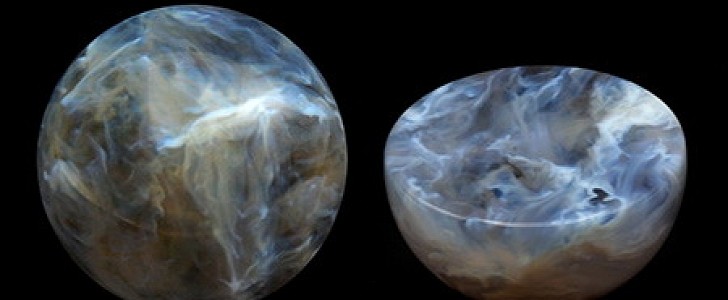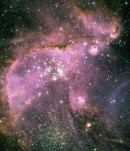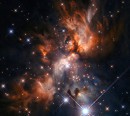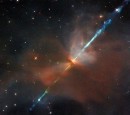Despite the cute name, “stellar nurseries” are mysterious areas of dust and gas, where stars are formed, which continue to fascinate scientists. A recent innovation in developing models of such stellar nurseries, for research purposes, could be the first step in deepening our understanding of how stars are born.
You’ve most likely heard about all sorts of unusual objects being 3D-printed, but what about stellar nurseries? It’s not the first time that scientists have created models for studying the birth of stars, but this innovative approach takes things further than traditional 2D models.
An inkjet-like 3D printing process was used to create complex representations of stellar nurseries. Sphere-shaped and around the size of baseballs with an 8 cm (3.1”) diameter, these projections were made using data from simulations of star-forming clouds. The 3D printing process was then used to embed droplets of opaque resin in transparent resin, recreating clouds in fine detail, with swirling clumps and filaments representing the material that will be transformed into a star.
It all started with a drawing. An assistant professor of astronomy and astrophysics at University of California, Santa Cruz (UC Santa Cruz), Nia Imara is also an artist. What started out as a portrait of herself touching a star, flourished into the idea of trying to build a molecular cloud, since star formation was her area of expertise. The idea became a reality and the results were published in the Astrophysical Journal Letters, on August 25.
Coauthor John Forbes, at the Flatiron Institute’s Center for Computational Astrophysics, helped develop the suite of simulations for various physical conditions within the clouds, while coauthor James Weaver, at Harvard University’s School of Engineering and Applied Sciences, was the one to actually use high-resolution 3D printing for turning that data into the model.
The results were incredibly-detailed stellar nurseries, where the complex star-forming structures are visible. This makes the 3D-printed models valuable not just for research, but also for education, and Imara intends to use them in her teaching activities.
According to Waver, this is just the beginning. With the help of this cutting-edge technique, future models could become even more intricate, incorporating, for example, different colors for a more vivid representation.
An inkjet-like 3D printing process was used to create complex representations of stellar nurseries. Sphere-shaped and around the size of baseballs with an 8 cm (3.1”) diameter, these projections were made using data from simulations of star-forming clouds. The 3D printing process was then used to embed droplets of opaque resin in transparent resin, recreating clouds in fine detail, with swirling clumps and filaments representing the material that will be transformed into a star.
It all started with a drawing. An assistant professor of astronomy and astrophysics at University of California, Santa Cruz (UC Santa Cruz), Nia Imara is also an artist. What started out as a portrait of herself touching a star, flourished into the idea of trying to build a molecular cloud, since star formation was her area of expertise. The idea became a reality and the results were published in the Astrophysical Journal Letters, on August 25.
Coauthor John Forbes, at the Flatiron Institute’s Center for Computational Astrophysics, helped develop the suite of simulations for various physical conditions within the clouds, while coauthor James Weaver, at Harvard University’s School of Engineering and Applied Sciences, was the one to actually use high-resolution 3D printing for turning that data into the model.
The results were incredibly-detailed stellar nurseries, where the complex star-forming structures are visible. This makes the 3D-printed models valuable not just for research, but also for education, and Imara intends to use them in her teaching activities.
According to Waver, this is just the beginning. With the help of this cutting-edge technique, future models could become even more intricate, incorporating, for example, different colors for a more vivid representation.







